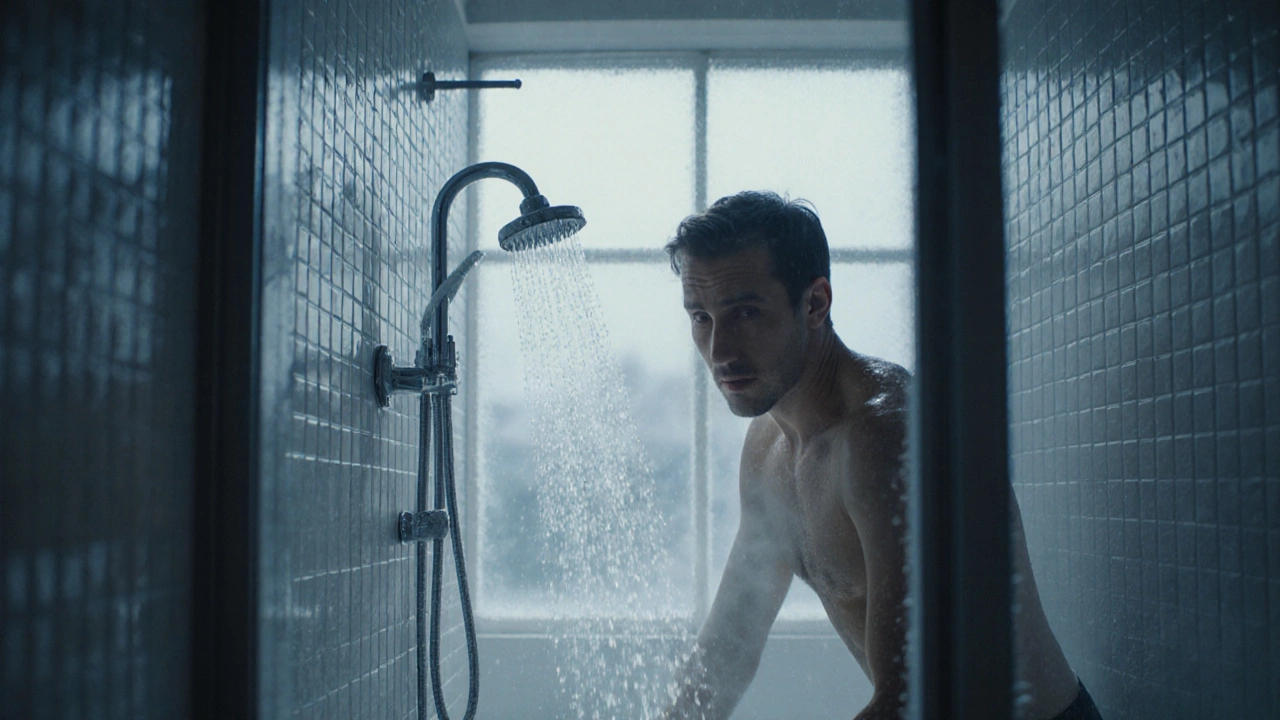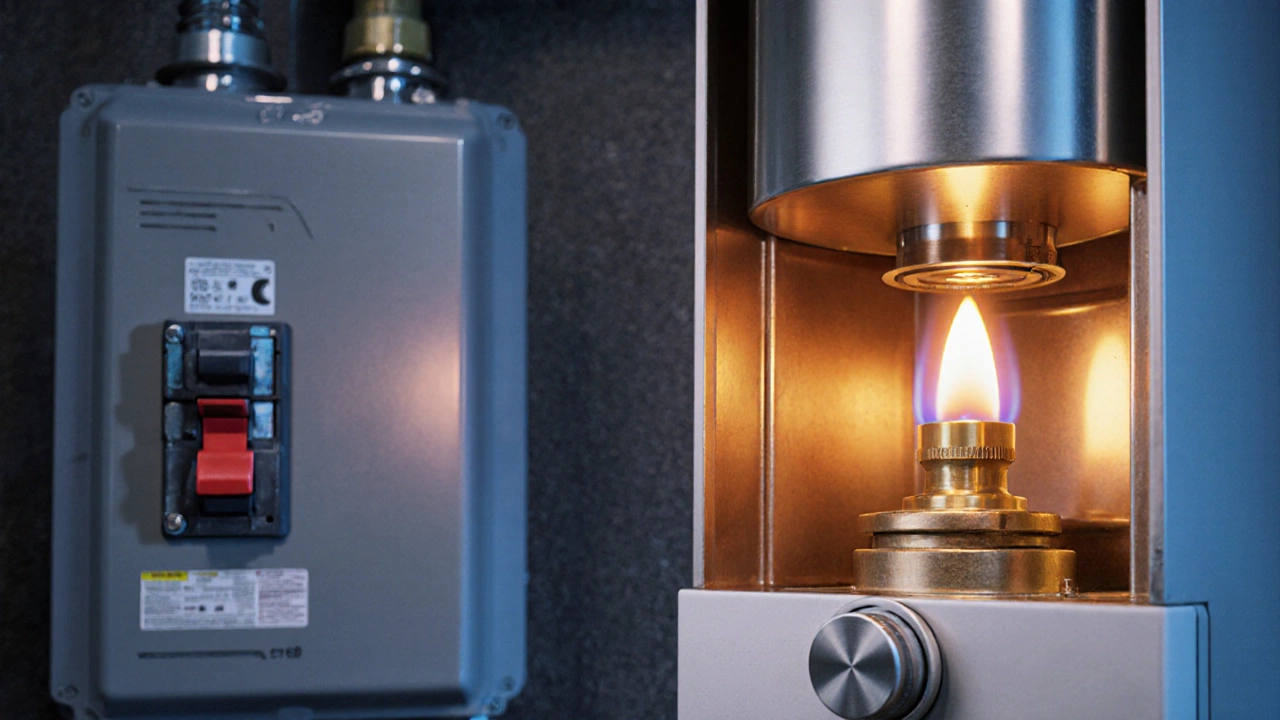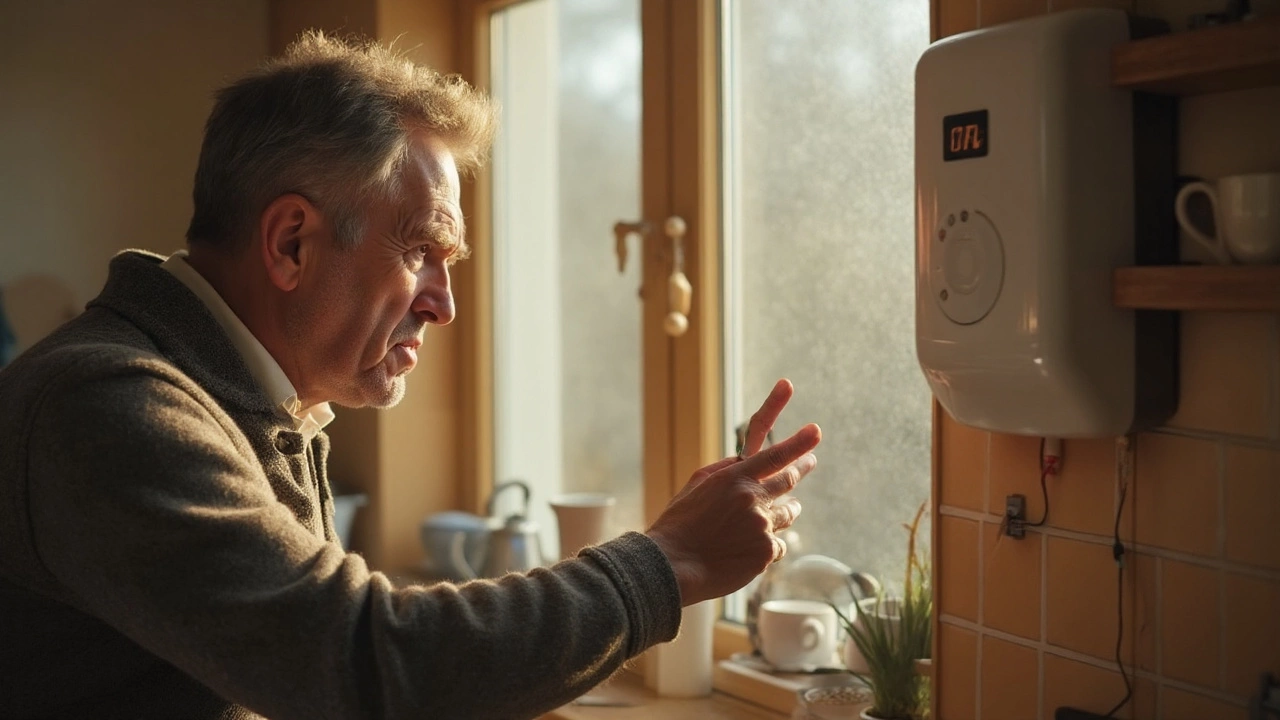
- 14 Oct 2025
- Gideon Thornton
- 0
Imagine stepping into a shower on a chilly October morning only to find the water is ice‑cold. The most common culprit behind a sudden loss of hot water is something you can often diagnose and fix yourself before calling a plumber.
TL;DR - Quick Fix Checklist
- Check the thermostat setting - is it turned off or set too low?
- Inspect the pilot light or electronic ignition - is it out?
- Look for a tripped breaker or blown fuse on electric units.
- Feel the radiators or taps for signs of sediment build‑up.
- Listen for unusual noises that might indicate a failing heating element.
What a "Hot Water System" Actually Is
Hot water system is a device that heats water for domestic use, typically powered by gas, electricity, or oil. In the UK, most homes rely on a combination boiler that provides both central heating and hot water. Some properties use a dedicated electric storage heater instead. Understanding the type of system you have determines which fault is most likely.
Top Three Reasons Your Hot Water Disappears
While many issues can cause a loss of hot water, three problems account for the bulk of cases in UK households.
- Thermostat or temperature control failure - If the thermostat thinks the water is already hot, it will shut off the heating cycle.
- Ignition or pilot‑light problems - Gas‑fired boilers need a lit pilot or a working electronic igniter to start heating.
- Electrical supply interruption - Tripped breakers, blown fuses, or a faulty heating element stop an electric water heater in its tracks.
Diagnosing the Issue - Step‑by‑Step
- Locate the thermostat - a dial or digital panel that sets the desired water temperature.. Verify it’s set above 45°C. If it’s low, raise it and wait 10‑15 minutes.
- For gas‑powered units, open the boiler’s front panel and look for the pilot light - a small flame that stays lit continuously.. If it’s out, follow the manufacturer’s relighting instructions (usually a knob to press while holding a lighter).
- If you have an electric water heater - a box with a built‑in heating element and thermostat., check the circuit breaker in your consumer unit. A tripped breaker will sit in the middle position; flip it fully to “off” then back to “on”.
- Feel the hot water outlet. If the water is lukewarm but not cold, sediment may be insulating the heat exchanger. Flushing the system can restore performance.
- Listen for ticking or humming noises from the boiler. A failing heating element - the metal coil that converts electrical energy into heat - often makes a buzzing sound before burning out.

Comparison Table of Common Causes
| Cause | Typical System | Key Symptom | Quick Fix |
|---|---|---|---|
| Thermostat set too low or failed | Boiler, electric water heater | Water lukewarm, no heating cycle | Raise temperature setting; replace thermostat if no response |
| Pilot light out / igniter fault | Gas boiler | Cold taps, error code on display | Relight pilot; if it won’t stay lit, replace igniter or gas valve |
| Tripped breaker or blown fuse | Electric water heater | No power indicator, silent unit | Reset breaker; replace fuse if needed |
| Heating element burnt out | Electric water heater | Only cold water, faint smell of burnt plastic | Swap out element - usually a 3kW coil |
| Sediment buildup in heat exchanger | Boiler, storage tank | Warm water takes longer, occasional clanking | Flush system with a garden hose for 10‑15minutes |
Deep Dive: Thermostat Trouble
The thermostat is the brain of the hot water system. In a combination boiler - which provides heating and hot water - the thermostat often doubles as the central heating controller. If it fails, the boiler may think the set temperature is already achieved and shut off the burner.
- Test: Turn the temperature dial up a few degrees and wait. If the boiler fires up, the thermostat is likely fine.
- Replace: Most modern thermostats are plug‑in modules. Disconnect power, remove the old unit, and snap in a new one. Calibration is usually preset.
- Pro tip: Keep the thermostat away from drafts or direct sunlight - both can cause false readings.
Ignition & Pilot Light Errors
Gas‑fired boilers rely on a tiny flame (pilot) or an electronic spark (ignition) to light the main burner. When this step fails, the entire system stays cold.
- Check for a gas supply valve that's accidentally turned off - it’s a small lever near the meter.
- Look for error codes on the boiler display. A flashing “E1” often points to a flame failure.
- If the pilot is out, hold down the reset button while using a long match to light the flame. Keep the button pressed for 30seconds to let the thermocouple warm up.
- Persistent failure usually means a faulty thermocouple, gas valve, or igniter. Replacing these components typically requires a qualified engineer.
Electrical Supply & Heating Element Issues
Electric water heaters are simpler: a heating element and a thermostat draw power from the mains. When something goes wrong, the unit either stays off or heats only part of the tank.
- Breaker check: Open the consumer unit and verify both the main switch and the dedicated breaker for the water heater are in the “on” position.
- Element test: Using a multimeter set to resistance (Ω), touch the probes to the element terminals. A healthy 3kW element reads around 6‑8Ω. Infinity means the coil is broken.
- Swap: Unscrew the element, disconnect the wiring, and install a new coil of the same rating. Re‑seal the tank to prevent leaks.
When Sediment Is the Silent Saboteur
Hard water leaves calcium deposits inside the heat exchanger. Over time these layers act as insulation, so the burner fires but the water stays lukewarm.
- Turn off the boiler and let it cool.
- Attach a garden hose to the drain valve at the bottom of the boiler or tank.
- Open the valve and let water run for 10‑15minutes, clearing out loose particles.
- Close the valve, refill, and restart the system. If the water warms faster, sediment was the problem.
Checklist Before You Call a Professional
- Thermostat set correctly?
- Pilot light or igniter lit?
- Breaker reset and fuse intact?
- Heating element resistance within spec?
- System flushed for sediment?
If you’ve crossed every item and still have no hot water, it’s time to get a certified engineer. Some faults - like a cracked heat exchanger or gas valve leakage - require specialist tools and safety certifications.
Frequently Asked Questions
Why does my hot water stop working after a power outage?
After a blackout the boiler’s electronic board may need a reset. Switch the unit off at the mains, wait a minute, then power it back on. If the problem persists, a blown fuse or tripped breaker is likely the cause.
Can I safely relight the pilot light myself?
Yes, as long as the gas supply valve is open and there are no strong drafts. Follow the boiler’s manual: turn the control knob to “pilot”, hold down the reset button, and use a long match or lighter. If the flame goes out immediately, the thermocouple is likely faulty and should be replaced by a professional.
How often should I flush my boiler to prevent sediment?
For hard‑water areas like much of the UK, an annual flush is recommended. If you notice a gradual drop in water temperature or hear knocking sounds, flush sooner.
What does a flashing error code on my boiler mean?
Error codes vary by manufacturer, but common ones like “E1” (flame failure) or “E2” (pressure fault) point directly to the issue. Check the user manual for exact meanings and first‑step troubleshooting.
Is it safe to replace a heating element myself?
If you’re comfortable turning off the mains electricity, draining the tank, and using a multimeter, you can replace most standard 3kW elements. Always double‑check that the new element matches the original wattage and size.



